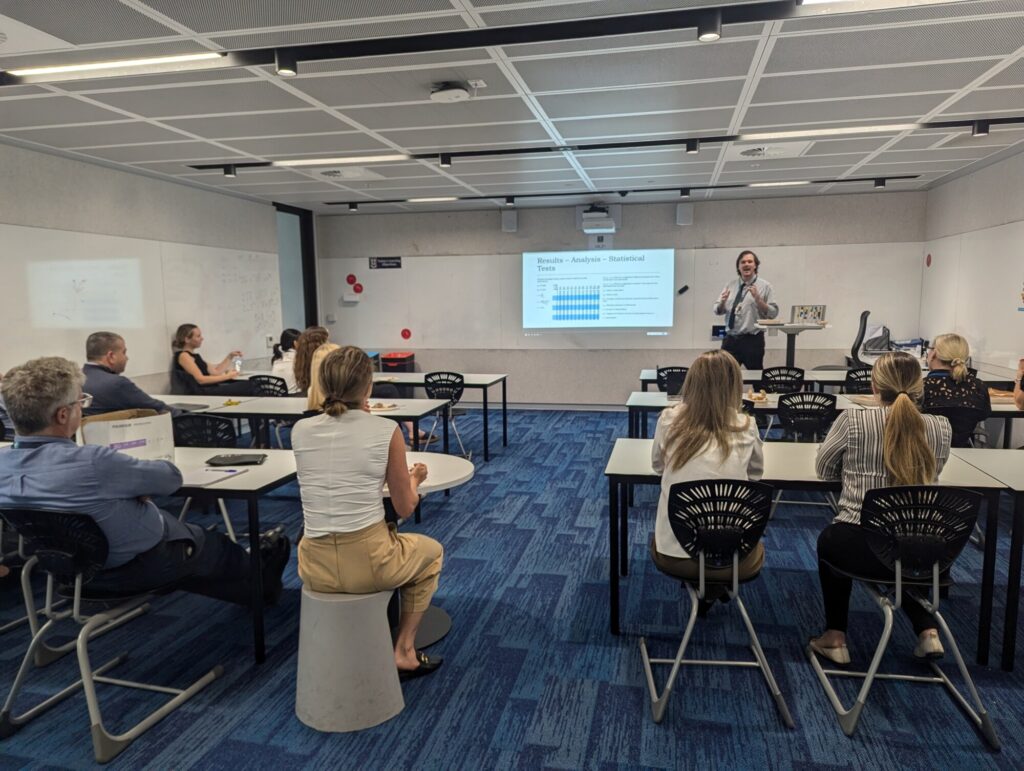
Ryan Taylor’s Teacher Inquiry Project
Do traditional tests truly capture students’ mathematical understanding, or could alternative assessments offer a more accurate reflection of their skills?
Ryan Taylor explored this important question in his Teacher Inquiry Group (TIG) project, presenting his eye-opening findings last week to Cranbrook Senior School teachers.
Ryan’s research focused on 36 Year 7 students of mixed mathematical abilities, including those who typically struggle with written assessments. Students were divided into two groups, each completing both a traditional paper-based test and an alternative assessment. The alternative assessment consisted of a one-to-one interview where students used a mini-whiteboard, gave verbal explanations, or created diagrams to show their understanding. The assessing teacher supported students by reading questions aloud, responding to clarifying questions, and providing definitions, without influencing the responses.
Key Findings:
– There were minimal differences in students’ achievement in simpler problems, but students performed significantly better in the alternative assessment as the complexity of problems increased.
– The average score was 10.7% higher in alternative assessments.
– 81% of students scored the same or higher in the alternative assessments compared to traditional tests.
– Statistical analysis confirmed with 99.9% confidence that alternative assessments positively impact student performance.
Ryan’s research highlights the importance of using varied and inclusive assessment methods to ensure students can demonstrate their understanding in multiple ways. This approach aligns with best practices in education and reflects the assessment principles promoted by the International Baccalaureate (IB), which emphasises that assessments should be inclusive, student-centred, and designed to support learning. Ryan’s work is a crucial step toward creating assessments that are not only more equitable and inclusive, but also better reflect students’ true potential.



